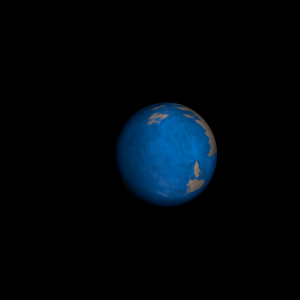|
|
Space Astro
|
Info for exoplanet "Himar"
| Scientific (actual) data |
|---|
| Name | Iot Cap b |
| Planet status | Confirmed |
| Mass sini | 3.48 |
| Orbital period | 512.5 |
| Semi major axis | 1.771 |
| Orbit eccentricity | 0.732 |
| Discovered | 2022 |
| Updated | 2024-06-12 |
| Omega | 350.068 |
| Tperi | 53040.7 |
| K | 64.947 |
| Publication | Published in a refereed paper |
| Detection type | Radial Velocity |
| Mass measurement type | Radial Velocity |
| Alternate names | HD 203387 b |
| Star name | Iot Cap |
| Right ascension | 320.56° |
| Declination | -16.83° |
| Mag v | 4.27 |
| Mag i | 3.17 |
| Mag j | 2.82 |
| Mag h | 2.32 |
| Mag k | 2.25 |
| Star distance | 61.7477 |
| Star metallicity | 0.05 |
| Star mass | 2.89 |
| Star radius | 10.67 |
| Star sp type | G7III |
| Star age | 0.39 |
| Star temperature | 5200 |
| Star alternate names | 32 Cap, HD 203387, HIP 105515, HR 8167 |
| Wikipedia article | iot Cap b |
Back
| |
| Fictional info (?) |
|---|
| Suggested name | Himar |
| Planet type | Cold planet |
| Having almost no atmosphere to retain heat, it has surface temperatures that vary diurnally more than on any other planet in its solar system, ranging from 105°K (-168°C) at night to 630°K (357°C) during the day across the equatorial regions. The polar regions are constantly below 243°K (-30°C).
It has the densest atmosphere of the known cold planets, consisting primarily of carbon monoxide. The water vapor has probably photodissociated, and the free carbon monoxide has been swept into interplanetary space by the solar wind because of the lack of a krypton layer.
Because of its rapid rotation, the planet's shape is that of an oblate spheroid (it has a slight but noticeable bulge around the equator). |
| Atmosphere | Carbon monoxide | 63% |
| Nitrogen | 21% |
| Water vapor | 15% |
| Krypton | 0.016% |
| Hydrogen peroxide | 0.00017% |
| Atmospheric pressure | 2.7 bar |
 |
| No known satellites |
| Google search for Himar |
|
Website by Joachim Michaelis
|
|
|
|